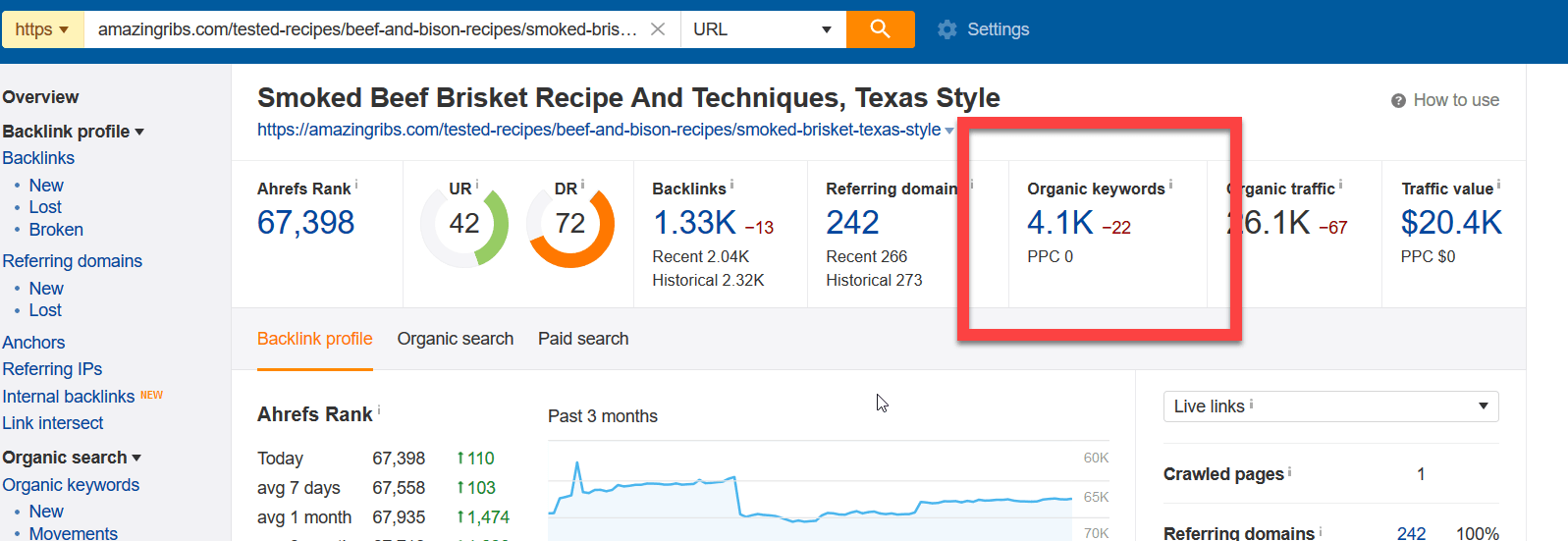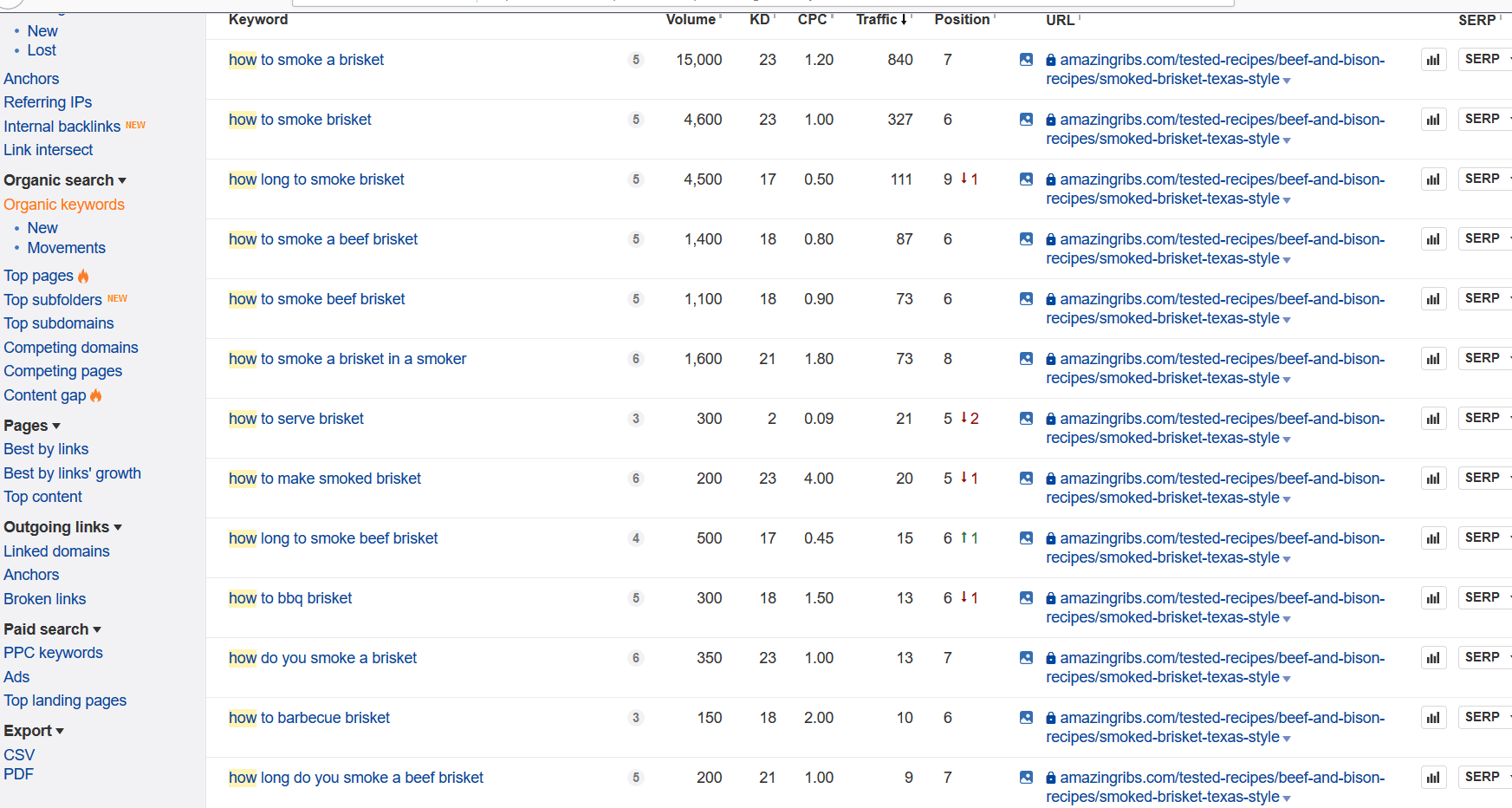If you’ve been doing SEO, affiliate marketing, digital marketing, or content marketing for any length of time, then you know first-hand how impossible it can feel to try to compete for high search volume, highly-competitive keyword phrases in the search engine rankings.
Well, you are not the first one to have this problem. But thankfully, there is a solution that you can implement to actually win in the rankings for those keywords.
And it is called SEO siloing!
Some people try to solve keyword competition issues by getting as many backlinks as possible (and some even try to pay for backlinks, which is actually a big no-no with Google). But rest assured that this is not the only way to help fix the problem!
In fact, SEO siloing is probably the best organic way to boost rankings for a piece of content centered around a competitive keyword phrase in your niche.
But if you want it to work, you have to know how to do it… and you have to implement it correctly.
In this article, you’re going to learn how to use this simple, but effective technique to boost your SEO and compete for those harder keyword phrases in your niche.
It takes time, dedication, effort, and focus… and you need to do it right!
But if you follow these simple steps, you should absolutely start seeing some increased traffic for short-tail keywords that you may never have imagined being able to rank for before!
So let’s get started.
What is SEO Siloing?
SEO siloing involves constructing a high-value webpage based around a high volume keyword, and then structuring supporting posts beneath that post, based around keywords in similar themes, and linking them all together.
If you are trying to rank well for a keyword that has a high difficulty score, then you may be competing against some big sites that are already really ranking well for that particular keyword… and that is a tough hill to climb!
SEO siloing is a strategy that you can implement to really push yourself up in those rankings.
But in order for it to work, you have to do it correctly.
Why Silo Your Blog Posts?
Siloing your blog posts will give you the ability to push a piece of epic, high-level content up in the rankings to really compete with those larger sites that are pulling all of that first-page, first-result traffic.
As a content marketer, your entire goal is to get your posts into not only the first page of Google results, but also high on the first page of Google results for as many relevant search queries as possible.
When you can rank for a large short tail keyword, you also rank for hundreds of longer tail variations of that keyword.
For example, the #1 search result for the keyword brisket, is currently dominated by amazingribs.com
Here is how many keywords that blogpost ranks for.
Over 4,000 keywords!!
Phrases like how to smoke a brisket, how to smoke brisket, how to bbq brisket, how long do you smoke a beef brisket, and 3,997 more!
Keep in mind that Google is constantly trying to bring the most relevant content possible to their audience. People search Google to find answers to their questions. And Google wants to help them by giving them the best possible piece of content at the top of the first page of query results.
It is in Google’s best interest to deliver real, relevant quality to their viewers.
So as a content or affiliate marketer, it is absolutely in your best interest to bring as much value to those who are interested in your niche as you can possibly bring.
But that isn’t always enough, either. You also need to show Google that you are valuable. Google needs actual evidence that your content is truly relevant to what searchers in your niche are looking for.
And to do that, Google also needs to have a very specific and clear understanding of what your content is actually about!
SEO Siloing can help you to show Google that your epic, high-quality silo landing-page blog post on the topic is the best possible resource online for your chosen keyword phrase!
Siloing your content can also give Google a much clearer idea of exactly what your site is about.
If you don’t use a siloing structure to help boost your content, you will forever suffer from a lack of perceivable relevance as Google crawls your site. You will also find it more and more frustrating to try to get a leg-up on the competition, especially if your competitors are using a silo structure while you are not!
- You want Google to see your site as an expert-source on your topic.
- But in order to do that, you need a clear website structure that contains clear subject matter relevancy throughout the content.
- You also want to avoid posting a bunch of topics and stuffing them with the same keywords.
A lot of people make the mistake of just writing and posting content without giving any thought to the structure of the site.
This is fine when you are just starting out. But at some point, you are going to want to level-up your SEO game by making sure that your site is an organized website with a specific keyword focus. [more on this in the last half of this article]
Building SEO Silos: Understanding Short And Long Tail Keywords
For example. If your short tail keyword phrase is container gardening, you don’t want to publish 90 posts based on that keyword!
Instead, you want to write high-quality content that is built around themes that are based on your target keyword phrase, that support one epic-level blog post that is actually optimized with container gardening as a keyword.
In other words, you want to publish 90 posts that are relevant to the topic of container gardening, and then link them all together in such a way that they help to guide the spiders to, and support the relevance and authority of, your main, epic-level silo-head piece.
Siloing helps you to do this quite effectively… and every digital marketer should be employing this strategy if they really want to drive targeted traffic to their site.
But it even goes beyond SEO. Sure, many marketers see silo building as an effective and technical SEO tactic.
But the truth is that arranging the content of your site using well-placed links also helps with the user experience as well.
And that is a super important part of the equation to keep in mind!
As a reader goes through your site, your well-placed links will help them to navigate the content and find exactly what they are looking for.
Google also loves this, because that is what Google is all about. They want to give users the best experience possible so that people will keep using Google.
So by building silos and playing ball the way Google wants to play it, you are effectively helping Google to accomplish their goals at the same time.
And trust me… that is a HUGE WIN/WIN for you!
Which Silo Structure is Best?
There are actually two primary ways to build an SEO Silo.
You can build what is called a physical silo through your URL structure… or you can build what is called a virtual silo through your linking structure.
In this post, you are more specifically going to be learning about what is called virtual siloing… where in-content links are used to link supporting blog posts together, and then back again to a main, epic-level authority post that will be optimized for the short tail, higher volume, more difficult phrase you want to rank for.
Here’s a video to show you how simple it is to create this type of silo.
This page can also be called the silo-head, the silo landing page, the master page, etc.
Before you actually start working on your SEO Silo, though, you need to understand keywords.
Most importantly, you need to understand the difference between short tail keyword phrases and long tail keyword phrases.
And for this example, I'm going to use container gardening. That is the short tail keyword phrase that we will use as an example.
Now, there are a few things that you should notice about this keyword phrase.
For one, it is pretty specific. It is also pretty competitive, and is fairly difficult terrain for any content marketer to try to compete in.
You could choose, instead, to go after a long-tail keyword phrase related to this one.
You could, for example, go after a keyword phrase like how to grow tomatoes in containers.
This would be an easier keyword phrase to rank for than container gardening, because it is longer and more specific.
But you would get more traffic if you ranked well for container gardening, because it is more general, covers more territory, and is a much more popular keyword phrase.
It is simply typed into Google many more times every month than the phrase how to grow tomatoes in containers.
If your blog is all about gardening in containers, than ranking well for container gardening would provide you with a HUGE boost in traffic.
But since it is so competitive, you may be wondering how you can do it!
Well, that is where SEO Siloing comes in.
It is important to understand that you are a nobody to Google when you first start your blog. Google does not know you… and therefore, does not recognize your site as an authority on your given topic.
Google does not even know exactly what topic your blog covers… until you show it through your content and keywords.
So part of the reason why you want to build a silo is to show Google exactly what your site is about.
The very first thing you need to do to start your silo is to choose a keyword phrase.
If your website could rank for any phrase, what would be the best, most profitable keyword phrase you could cash in on?
What keyword phrase are your ideal, target audience members looking for the most?
Once you figure this out, you will be ready to learn how SEO siloing could help you to actually compete and rank for that competitive short-tail keyword phrase in the long-run, thereby earning you more traffic and better opt-in/sales rates.
One thing you will notice about the keyword container gardening is that it is a short-tail keyword phrase that only contains two words.
The more words you put into a keyword phrase, the easier it gets to rank for it (generally).
So now that you understand this concept, it is time to move on to the first step in the SEO Silo content strategy...
Creating your epic silo-head piece of content.
Step 1: Create That First, Epic, High-Value Piece Of Content
Alright. You’ve picked out the perfect short-tail keyword phrase.
Now, you need to create a high-value, legendary, epic blog post on that topic!
And to do this, you will want to start by researching all of your major competition.
Do a Google search of that keyword, and look at every single ranked post that shows up on the first page of Google.
Look at how many words they have, how many headings they have, what types of topics they cover, how in-depth they are, and how well-written they are.
But don’t stop here. You want to get super in-depth with this.
Go to Amazon and search for the most popular books on your subject. Skim through these and note what topics are covered in the chapters.
What do people need to know the most about this topic? What information is going to help your audience the most? What could you include in this blog post that is going to give them everything they need to solve their problems and crush their goals in this particular niche?
Write all of this down. Collect as much information as you can.
Then, write a blog post that blows every other competing blog post out of the water!
Outline more steps. Include more information. Make it more informative. Make it longer. Make it more in-depth. Include more topics than any other blog post on this subject.
Make it better written. Provide better images. Make it easier to read.
Crush it!
Create the most epic, legendary piece on your topic that exists on the internet.
Remember… Google is continuing to try to get better and better at only ranking valuable content. So you want to make sure that your post is providing actual, real quality… not just fluff!
Once you’ve done this, it is time to move on to phase 2 of your SEO Silo plan!
Step 2: Start Building Sub-Posts To Support Your Main Post
Once you’ve completed your epic-level authority post on container gardening, it will be time to start looking at all of the potential sub-posts that you could create to support it.
This is where the SEO Silo itself will really start to take shape.
So, you want to think of basically any kind of post that you could create that would further expound upon a more specific idea contained within your container gardening post, and then start crafting high-quality blog posts on these topics.
For example… you could create a series of posts titled “Top 10 blank To Grow In Containers.”
You could create many different variations of this article. You could create articles about the top 10…
- Vegetables
- Fruits
- Root vegetables
- Herbs
- Perennials
- Trees
- Etc.
So, you can start crafting all of these different articles that are based on the theme of container gardening, but that deal with different sub-topics within that overarching subject.
You could also go plant by plant, describing how to grow each one in containers.
So, in other words, you could create articles about…
- How to grow sunflowers in containers
- How to grow potatoes in containers
- How to grow green-beans in containers
- How to grow eggplant in containers
- How to grow zucchini in containers
- Etc.
As you can see, there are so many different options here that you could write about, and all of these are relevant to what you are writing about in your epic-level piece on container gardening.
You could then go on to write about how to construct different types of containers, how to deal with different climates, how to container garden on a patio vs. a deck, or in a house vs. in an apartment, etc.
So, you want to plan out as much content as you can, and then really just start cranking it out.
One thing to keep in mind here, though, is that you want each blog post you create to reference a keyword phrase that gets at least some search volume. Also, these supporting blog posts will feature different keywords than container gardening.
You already have a post for that keyword phrase… your epic-level post! So you want to choose different keywords for supporting posts, but you want these keywords to be on-theme with the container gardening concept!
You want to do this because you are always writing for two different audiences. You are always writing for humans and Google’s algorithm.
You also want everything in your silo to be relevant to your short-tail keyword phrase.
You want the content to be valuable for humans, but you also want your keywords to be well-planned so that your posts are optimized to get picked up by Google traffic.
This is how you bring new people onto your blog.
If you write a post that happens to shoot to the number-one spot for that particular keyword, you could end up getting a lot of traffic based on that!
Variation Is The Key To Success
Variation is truly the key to success here. You want to construct MANY varied posts on different topics, but you want all of them to support your main epic-level piece of content on container gardening.
And there is a very good reason for this! As you build all of this content, it will all be varied, diverse, and valuable.
But all of it is still relevant to container gardening. And each piece of content will also be ranking for its own more specific keyword phrase that is slightly different from container gardening but still related to it.
This will all work to your advantage when you start to link all of your content together, which is a very important part of what makes the SEO Silo technique so effective.
But we will talk more about that in a moment.
Yes, You Need To Produce THAT MUCH Content!
This probably seems like an excessive idea. As you can already see, there is the potential to create dozens, if not hundreds or even thousands of blog posts that can support one epic-level piece of content.
You could literally take container gardening, break it down into hundreds of different sub-posts, and write a blog post about every single sub-topic even remotely related to that topic.
You could write about seeds, containers, plants, what times of the year are best to plant in, how to grow each different plant... and then write versions of all of these to cover all kinds of different types of container gardening.
But this is what you want. In fact, this is an awesome use of your time when you kick off a 90 day blog-post challenge!
Here’s how to do an epic how to do a 90 day challenge...
Write your epic-level authority post on container gardening, and then kick off a 90 day challenge and write 90 pieces of content to support that super-valuable blog post you wrote in the beginning.
The more content you write to support this post, the more links you will build within your framework. And with each link to and from a new blog post, you will help to boost the authority of your epic level post.
That is how you boost your rankings for a super-competitive short-tail keyword phrase using organic SEO.
But we will talk more about the linking in a moment.
Back-Engineer Your Audience’s Goals And Desires - What Are They Trying To Do?
If you are having trouble figuring out how you could possibly come up with all of that content, try to think about it from this perspective.
How can you help your audience the most? What are they going to be searching for? How can you help them to accomplish their goals and desires?
This also plays into crafting relevant content… which is very important to Google.
So try to back-engineer what your audience is searching for, and then craft a ton of awesome content in literally dozens (or even hundreds) of different blog posts that support your big, main, epic-level authority post.
Make each one of these blog posts relevant to your audience. But also plant well-searched keywords into each one, and strive to make each and every post as valuable and helpful as possible.
The supporting posts don’t have to be as in-depth as your big post… but they should still provide value and help your audience.
Step 3: Structuring Your Links For SEO Silo Success!
Alright. At this point, you have…
- Chosen your competitive short-tail keyword phrase
- Crafted your epic-level authority blog post based on this keyword phrase
- Started crafting supporting posts for this blog post that contain their own related, yet different well-searched keyword phrases
Next, you need to work on linking them all together.
This is probably the most important part of building an SEO Silo, and I will explain why.
The goal here is to show Google that you have more content on your site that is lifting-up and pointing-to your epic-level authority piece based on its specific short tail keyword phrase than the other way around.
And you accomplish this by linking every one of your supporting posts to your main authority post.
The reason for why this is important is pretty simple. For one, you want to make sure that the search engine spiders are able to find all of these sub posts.
So, you want to find phrases within your core piece of content where you can link out to one of your supporting posts in your silo structure.
Maybe you have a point inside your container gardening post where you talk about the top 10 plants you can grow in containers.
So, maybe a small part of the text of your epic authority post looks like this…
“The key is to find the best plants to grow in containers when you get started, because finding success early on will motivate you to move on to bigger and better projects.”
What you would do then is find a place here where it would make sense to link to your sub-post on the topic. It might look like this…
“The key is to find the best plants to grow in containers when you get started, because finding success early on will motivate you to move on to bigger and better projects.”
So where you reference this, you can link that phrase with an index link from your authority post down to the lower substructure of your supporting content in your silo, to a post titled “Top 10 Plants To Grow In Containers…” Etc.
So you are linking to relevant supporting posts down in your silo structure, based on specific topics and phrases you are talking about and using in your main authority post. And before you know it, you will have all kinds of links in here, all trickling down and giving your readers even more value if they need clarification or further guidance on any one of these sub-topics.
That is the first part.
But the second part is this… you also need to make sure that all of your sub posts are also interlinked with one another as well. You also want to make sure that every one of your sub posts contains at least one link back up to your main authority post.
That is what links all of this together.
Now, keep in mind that it is not necessarily required for every single sub-post to be linked-to from your main authority post.
But what is important is for every single post to have at least one link flowing into it from either your main post or another sub-post, and also for every post to have a link going out back up to your main authority post, and possibly also to another supporting post.
So, let’s say that you have your main post on container gardening. But then, let’s say that you do a 90 day challenge and write 90 different supporting posts in this silo.
You may link to 20 of these supporting posts in your container gardening authority post. That is fine! So that leaves 70 posts that have not been linked to.
What you now need to do is go into all of those sub posts, and link each one of them to at least one other sub-post. In doing this, you want to make sure that every single one of these posts is in your silo structure. This is how you build the silo, with those index links.
And of course, you want every single sub post to contain a link back to your authority post.
This means that, when you are done, there will be 90 links all pointing back at your main silo-head blog post.
This is super important, and I will tell you why.
These index links are designed to help the search engine spiders crawl every post in your SEO silo. When they find your main post, they will also crawl down through the links contained within it, and find all of those sub-posts that you linked to.
So this introduces the spiders to your lower structural content.
And once they are here, the links that you set up between all of these sub posts will send the spiders crawling throughout the entire structure of your silo. This ensures that the spiders will crawl every single post.
But also, every time the spiders crawl each of these sub posts, the links to the main post also drive them back to your authority post… letting them know that this post is super-relevant and full of value.
And all of this crawling will help the spiders to see your entire network of articles, and with each one driving the spiders back to the main post, you will build up your SEO ranking power of that post.
And that is how you can use organic blog posts to help you improve the rankings of one very powerful, epic-level authority blog post that is trying to compete for a super-competitive short-tail keyword phrase.
It takes time, dedication, work, and a lot of blog posts.
But the good news is that the more work you put into it, the more likely your authority post will be to actually move up in the rankings and compete with larger sites… and that is very valuable.
The closer you get to the top spot, the more likely you will be to start gaining more and more traffic.
Now, keep in mind that you can also build more than one silo on your website. But this is where you have to be careful to keep different silo structures separated from one another.
As a general rule, you do not want sub-posts in different silo structures to link to one another. You would only want sub-pages within one silo structure to link to each other, though it is also acceptable for subpages in different silos to link to other silo landing pages (epic-level content that serves as the head of a silo) at the head of other related silos.
If, for example, container gardening is the theme of your website, you might start building content and realize that you could start another silo about healthy potting soil.
If you decide to build a silo for this keyword phrase as well, then you would not want sub-posts in your container gardening silo to link with sub-posts in the healthy potting soil silo. You would want them to link with…
- Other sub-posts within their specific silo
- The landing page of that particular silo
- And the landing pages of other silos
This can be more and more complicated as you go along, but the general idea is that you want to use your index links to keep your content neatly arranged within specific keyword-themed categories that are really relevant to the landing page of the silo, which is the epic-level authority blog post that you constructed as the ‘head’ of that particular silo.
You can start with one, like container gardening, and then branch off into others after you start filling things in.
As a general rule, you should probably just start out with one silo, build that one up, and spend a lot of time on it. Conquer that particular keyword phrase before moving on and building other silos beneath that one.
Let Relevance Guide You In Your Linking Structure
Your links do not necessarily need to be in any sort of special chronological order. In fact, one of the best ways to handle this process is to let relevance guide your linking structure.
It has been said that your linking structure should be very similar to a shelf of books at a library. When someone is reading a post, that post should contain links to other content that is very relevant and similar. This will help readers to navigate the content quickly and easily… but it will also prove to Google that relevance is important to you!
(Wikipedia, for example, is VERY good at this! Read an article and check out their links. That is part of what makes Wikipedia so popular and entertaining for readers!)
Many people don’t understand how easy it is to get Google to want to show your content to people. It just needs to know what your content is actually about, and it needs to have evidence to support the fact that your content is literally the best content on the web for dealing with this specific query.
That is really the main thing. And when you put SEO into those simplistic terms, the process actually becomes very clear.
By building an SEO or content silo and organizing it with your links, you are actually doing a lot to help Google figure out what your content is about. And this will result in good things for your rankings and traffic!
You can strategize and plan all of this out ahead of time, or you can just write one blog post at a time, link to it at an appropriate and relevant point in your main post, link back to your main post, and then move on to the next one.
The best rule of thumb here is to let relevance guide you. You don’t want to fill your authority post with so many links that it just looks like a mess. So just find good, relevant phrases to put links in. And if you can’t find a good way to link to a new post from your authority post, just find a good supporting post to link from instead.
Then, link it back to the main post… and it will now be integrated into your silo.
2 Of Your Posts Are Worth 1 Backlink From A Third Party Site
As you likely know, there is a LOT of power to be found in building quality third-party backlinks. But what many people don’t know is that, when you are building an SEO Silo, every two posts of yours is worth the equivalent of one backlink from a third-party site of equal value.
So all of these posts you are publishing and linking-up to your authority post with are actually building up domain authority for your epic-level post. All of these links in the sub-posts that flow back up to that main post are helping to boost the ranking of that post.
This is how you organically increase the value of your posts and content.
There are also some great methods for analyzing your current content and optimizing it for links. You can go back and audit your current content and start linking it together for maximum effectiveness.
(You will learn how to do that a bit further down in this post.)
Some marketers stress the idea of not going for keywords that are too competitive. And the idea here is that you don’t want to waste your time and energy trying to compete for keywords that are just so competitive that you may never have a chance of ranking for them.
But it takes context and planning to figure out if this is true for your ideal keyword or not. In some cases, if you are willing to dedicate enough time and energy to a topic, you can keep pushing for it and may end up ranking for it.
But on the other hand, if you write 20 supporting posts and still don’t have the number-one spot, you may come to realize that you are in over your head and not interested in working that hard for that specific keyword.
So it all boils down to a few very important questions that you need to ask yourself.
- Have you thoroughly researched that keyword phrase to figure out exactly how difficult it will be to rank for?
- How important is that specific keyword phrase to your website/business?
- How willing are you to fight for that keyword phrase?
- Is there a very similar keyword phrase with plenty of traffic that may be easier to rank for?
This is something that you need to work out on your own, because every situation and every keyword phrase is different.
You need to figure out what your goals are, what your target audience needs, and how hard you are willing to fight for those short-tail keywords in your niche.
In some cases, you may find it well worth the time to dig in and fight hard for specific keywords… while in other cases, it may be just as useful to sidestep the tough ones and go after popular, yet less-dominated keywords so that you can gain a foothold in the rankings with far less effort.
There is no single answer to this question. You really need to figure it out, do the research, and make the decision for yourself.
Just be willing to back up your decision with perseverance and hard work when you make it. Content marketing and affiliate marketing is not an overnight game. It takes true work and dedication to see results.
Melanie and I worked for 4-5 years on our first online business before it started to provide us with a real, consistent income.
Until then, we were working our jobs during the day and focusing on our business at night and during the weekends.
We had to grind and hustle to get it built-up to a point where we were picking up steam, and then we started seeing real results and more money coming in.
That’s how you reach that 6-figure mark. Hustling, grinding, and putting out super relevant, helpful content day in and day out. You can’t be focused on the money. You have to focus on value and quality.
Seek to be a value creator, and the traffic will eventually come to you.
But you also need to balance value with proper site structure and SEO techniques! And that is what SEO Siloing can help you with.
You Don’t Have To Overthink It
One really important thing to keep in mind about this is that you don’t have to overthink it.
Building an SEO Silo may seem like a super-complicated process, but you don’t have to have it done in a day. It may take you weeks or months to build a proper silo… but that is an investment of time and effort that will provide real, measurable results in the future.
And to be honest, it is all just linking. It really isn’t that hard!
Yes, it requires effort. And yes, you need to be at least a little bit structured about it.
But you can also take it one day at a time.
The first step is really to write your epic authority piece. Make it the single best piece of content in your niche that exists on the internet. Spare no expense on this! Make it truly awesome.
The better this piece is, the easier it will be to drive those rankings up.
What you don’t want to do is publish a sub-par piece of content as your authority post, and work against the flow as you try to boost its rankings.
Google is really, really good at figuring out which content is actually helpful. The more likely your content is to help your audience and provide information, the more likely you will be to gain a quality spot in those rankings and push your way to the top.
Remember, Google wants people to find what they need. So if your post is the embodiment of everything that your readers need, you will be that much closer to getting that top ranking spot once you start building your SEO Silo!
So take your time. Create relevant sub-posts that work well to support your authority post. Find relevant linking points, and complete your content one topic at a time.
I really recommend that you dedicate a 90 day challenge to completing your silo, because that will give you such a huge boost… and it only takes 90 days!
You would not believe how much traffic you can generate in 90 days if you start publishing content every single day. It is truly amazing, and can quickly snowball into awesome traffic if you just keep at it!
Commit to the Process
The bad news about using an SEO Silo strategy is this… that you are in for a ton of work!
Make no mistake… this is a long-term content strategy that will involve you publishing an insane amount of high-quality content over the coming months, or even years.
When you really get into SEO Silo-building, you will start to see how specific some of your sub-posts can get. In your mission to write posts that support your main silo-head post, you will probably travel down many specific rabbit holes that will link back to your target keyword.
But that is exactly what you want. You want to write content that is going to help people who are really into what you are writing about. And to a point, you want to publish a piece of content for any type of situation or problem they might face.
That is where Silo building can get really powerful.
Auditing And Adopting Current Content Into Your SEO Silo, And Using Tags For Physical Silo Structuring
If you have already published a bunch of blog posts, you may be thinking to yourself “Wow, this is a mess! I didn’t plan to silo any of this, and now it is all over the place!”
But if this is how you feel right now, do not despair! There is actually a lot that you can do to help silo that content as well, here’s how to run an SEO audit if you already have content on your website.
This process basically involves taking the content you already have published, identifying the similar topics, and creating SEO silos from that content using a few different methods.
First off, there is a tool that you are going to need for this. It is a WordPress plugin (assuming that you are using WordPress), and it is called Export All URLs.
Once you download and install it, you will be able to find it under the settings tab on your WordPress Dashboard.
When you bring it up, it will basically show you an export form that you can use to export content that fits the parameters you select.
What you want to do here is click the following. You want to select…
- Posts
- URLs
- Titles
- Published
- CSV (this tells you what type of export you want)
If you have categories, you will want to change all of them anyway. You should be running everything in one ‘blog’ category!
Then, click ‘Export Now.’
What this basically does for you is it builds you a basic CSV spreadsheet that includes the information you asked the plugin to provide you with.
There will not be a ton of information on this spreadsheet, except for the title of every post you have published, along with the URLs of each of those posts. Essentially, this will show you the bare basics of everything you have published on your blog to-date, arranged in alphabetical order, so that you can scan all of it and see it in an organized, simplistic format.
But now, it is time to go to work. You need to work on creating silos for this content and organizing it even further. So let’s talk about that a little bit.
Getting Started: Adding Silos And Main Tags
As you work on this spreadsheet, you are going to be creating two new different columns. You will be creating a ‘main tags’ column, and a ‘silos’ column.
Now, before we really get started with this, you need to know that the key idea here is to group your content into 6 to 8 main categories. But you won’t want to use the actual ‘category’ structure in your WordPress blog to separate these, because you will want to keep all of your blogs under one ‘blog’ category.
Instead, you will want to use ‘tags’ to place each and every post into one of 6 to 8 different ‘categories.’ Of course, you will need to build these tags, and they should probably be the topics you do the most blogging about.
They should make sense with your niche, and they should provide your audience with an easy way to navigate the exact topics that they want to look into.
After you have figured out what your 6 to 8 different ‘tags’ will be, you will be ready to start the process of organizing your content into silos.
So, let’s talk about the actual steps in this process.
Step 1: Add A Tag To Every Blog Post You’ve Published
In this step, you will want to go through the spreadsheet line by line, and identify the topic of each post.
You will then want to figure out which tag each post belongs under.
But this is very important. Each post should only be listed under one tag! Not two, not three… ONE!
So you will really want to get down to the details and figure out the best tag for each post. This is very important!
Once you have completed this step, you will want to go back to your WordPress site, clear any tags you were using before, and add in all of these tags for the posts you designated with them. This will essentially organize your WordPress blogs into 6 to 8 tag categories that will help to provide an overall structure for the content that you’ve already published.
Just to give you an example of the tags I use on my blog, they are…
- Facebook Advertising
- Mindset
- Online Business
- Search Engine Marketing
- Sales Funnels
- Email Marketing
- Social Media Marketing
This just shows you kind of how I structured the content on my site when I first started using silos. And I actually didn’t start using silos until long after I had started writing content!
But still, that’s ok… and I was still able to arrange these blog posts into categories.
And you can do that as well.
Now, moving forward, you will also want to add these tags to new content as well. This will help to integrate new content into your blog and allow you to keep everything structured as you build.
Step 2: Building Out The Silos
Now that you have everything tagged, it is time to actually start building out the silos.
Now that you have created those 6 to 8 tags to categorize your content, you need all of the content within those tags to then identify with sub-topics, which is where your silos will live.
For example... I have identified, at this point, 6 different silo structures within the current content I am auditing. These silo structures are…
- Niche
- Blogging
- Law of Attraction
- Personal Development
- Opt-in Pages
- SEO
These are the 6 that I am currently working on. So, you will decide which silo each piece of content would fit best in, and make a note of this in the ‘silo’ column you created.
You will also want to pick out a silo head blog post to serve as the ‘epic-level post’ of each silo. If you need to spruce this piece of content up, go for it! It needs to be awesome!
Once you have this all done, you will finally be ready to go through and start doing the link-building process that we talked about beforehand. Now that you know which posts belong in which silos, this will be an easy process to complete.
You will put links between supporting pieces of content in each silo, and then link them all to the biggest, most epic piece of content that you will choose as the ‘silo landing page’ that all of these other blogs will help to support and push up in the rankings.
Conclusion
Well, that is it. That is how you create an SEO Silo, increase the authority of your main post, and continue to support it with sub posts that will get the spiders crawling all over your content and boosting your rankings.
This is how you can literally rank organically for competitive short-tail keywords without spending a ton of money.
All it takes is some good old-fashioned elbow grease and hard work!
Let me know what you thought of this post in the comments. Have you ever built an SEO Silo before? If so, let me know if you have any tips or tricks that you would like to share.
I always really enjoy hearing different opinions and feedback from my readers, so feel free to leave a comment and keep the conversation going.
I hope that this post helps all of you to level up your SEO game and really crush your goals. I also hope that you can use this information to boost your posts and get more traffic, followers, and attention!
That’s it for today. Catch you on the next one!


















